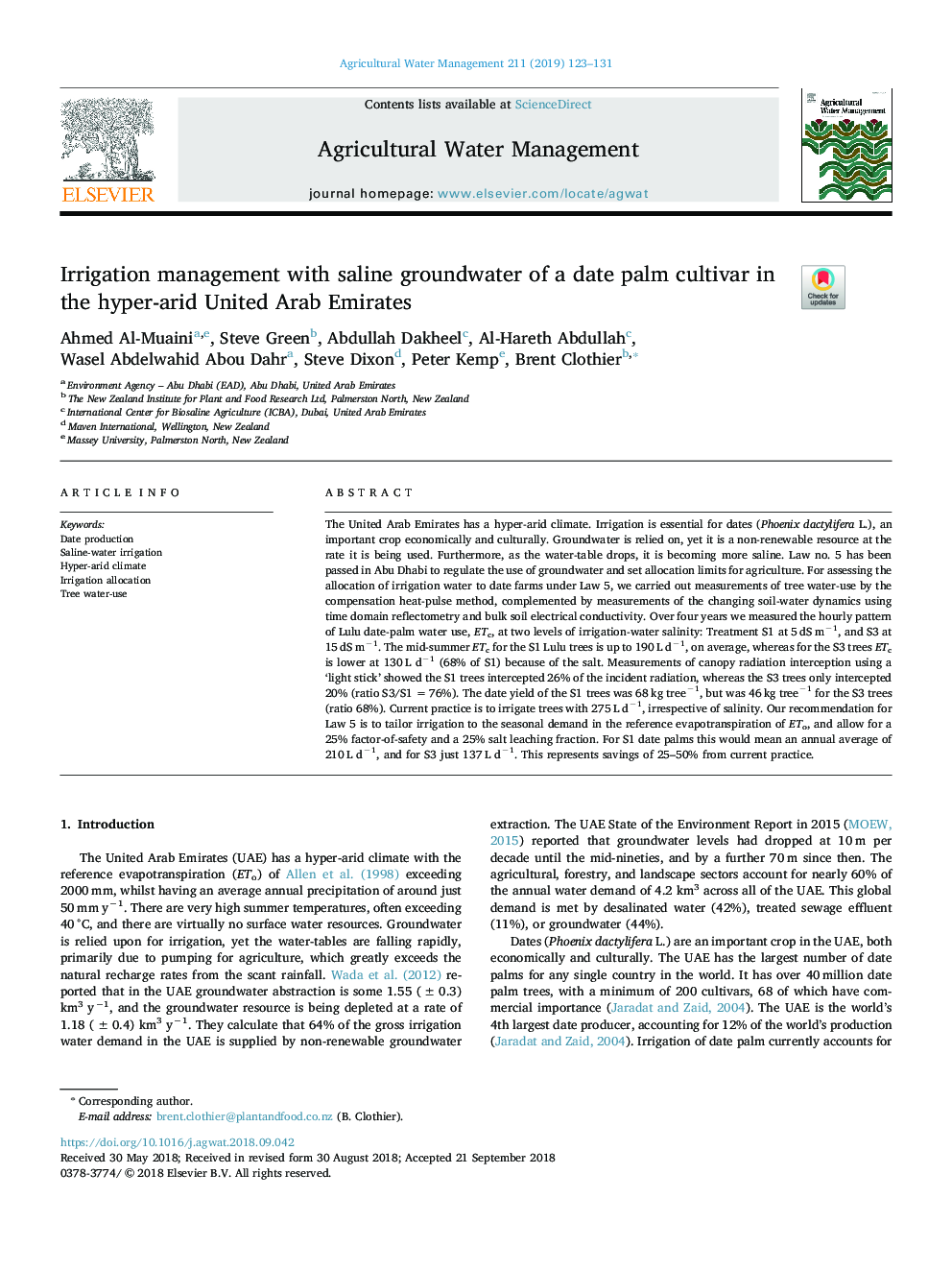| کد مقاله | کد نشریه | سال انتشار | مقاله انگلیسی | نسخه تمام متن |
|---|---|---|---|---|
| 11021755 | 1702818 | 2019 | 9 صفحه PDF | دانلود رایگان |
عنوان انگلیسی مقاله ISI
Irrigation management with saline groundwater of a date palm cultivar in the hyper-arid United Arab Emirates
ترجمه فارسی عنوان
مدیریت آبیاری با آبهای زیرزمینی سالین یک رقم نخل خرما در امارات متحده عربی
دانلود مقاله + سفارش ترجمه
دانلود مقاله ISI انگلیسی
رایگان برای ایرانیان
کلمات کلیدی
تولید تاریخ، آبیاری آب شور آب و هوای بیش از حد خشک، تخصیص آبیاری، درخت استفاده از آب،
موضوعات مرتبط
علوم زیستی و بیوفناوری
علوم کشاورزی و بیولوژیک
علوم زراعت و اصلاح نباتات
چکیده انگلیسی
The United Arab Emirates has a hyper-arid climate. Irrigation is essential for dates (Phoenix dactylifera L.), an important crop economically and culturally. Groundwater is relied on, yet it is a non-renewable resource at the rate it is being used. Furthermore, as the water-table drops, it is becoming more saline. Law no. 5 has been passed in Abu Dhabi to regulate the use of groundwater and set allocation limits for agriculture. For assessing the allocation of irrigation water to date farms under Law 5, we carried out measurements of tree water-use by the compensation heat-pulse method, complemented by measurements of the changing soil-water dynamics using time domain reflectometry and bulk soil electrical conductivity. Over four years we measured the hourly pattern of Lulu date-palm water use, ETc, at two levels of irrigation-water salinity: Treatment S1 at 5âdSâmâ1, and S3 at 15âdSâmâ1. The mid-summer ETc for the S1 Lulu trees is up to 190âL dâ1, on average, whereas for the S3 trees ETc is lower at 130âL dâ1 (68% of S1) because of the salt. Measurements of canopy radiation interception using a 'light stick' showed the S1 trees intercepted 26% of the incident radiation, whereas the S3 trees only intercepted 20% (ratio S3/S1â=â76%). The date yield of the S1 trees was 68âkg treeâ1, but was 46âkg treeâ1 for the S3 trees (ratio 68%). Current practice is to irrigate trees with 275âL dâ1, irrespective of salinity. Our recommendation for Law 5 is to tailor irrigation to the seasonal demand in the reference evapotranspiration of ETo, and allow for a 25% factor-of-safety and a 25% salt leaching fraction. For S1 date palms this would mean an annual average of 210âL dâ1, and for S3 just 137âL dâ1. This represents savings of 25-50% from current practice.
ناشر
Database: Elsevier - ScienceDirect (ساینس دایرکت)
Journal: Agricultural Water Management - Volume 211, 1 January 2019, Pages 123-131
Journal: Agricultural Water Management - Volume 211, 1 January 2019, Pages 123-131
نویسندگان
Ahmed Al-Muaini, Steve Green, Abdullah Dakheel, Al-Hareth Abdullah, Wasel Abdelwahid Abou Dahr, Steve Dixon, Peter Kemp, Brent Clothier,
